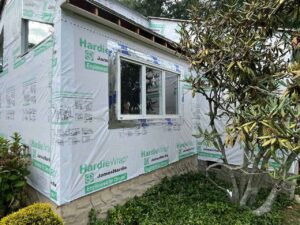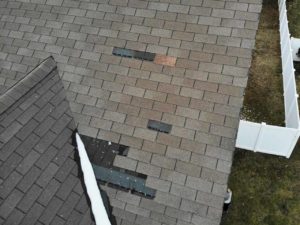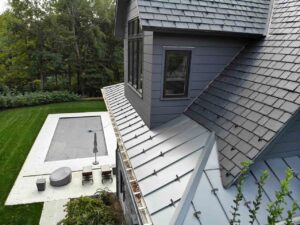Extreme weather can come in many forms, from extremely hot or cold conditions to hail, snow, and extreme wind. It is important for homeowners to be prepared for any type of severe weather that may hit their area as it can cause costly damage and higher utility bills if not properly protected against. Taking the necessary steps to prepare your home for such conditions will help protect your home from potential damage and make your family more comfortable during inclement weather. Here are some tips for preparing your home for extreme weather.
Protection against extreme temperatures
When it comes to weatherproofing your home against extreme temperatures, there are a few different things you can do. One of the most important steps to take is to ensure that your home is properly insulated. This means making sure that all windows and exterior doors are sealed off properly and that any drafts or gaps in the walls or ceilings are filled in. Additionally, you should check to make sure your heating and cooling systems are working efficiently; having an HVAC technician inspect these systems on a yearly basis will help prevent future problems and costly repairs. You should also invest in storm windows or shades for extra insulation as well as solar films for windows facing south. Finally, consider investing in an attic fan; this will allow hot air to escape during summer months and reduce the amount of heat that seeps into your home. Along with these changes, be sure to regularly check your roof for damage caused by weather changes as this can lead to more costly repairs if left unchecked. By taking these steps, you’ll be able to better protect your home from extreme temperatures and ensure it stays comfortable all year round.
Often, we focus on home efficiency while ignoring what can be done to make your home more able to stand up to weather events that, while rarer, can cause a lot more damage if your home is not prepared. Here are a few suggestions you can do to help your home better weather those extreme events.
Install impact-resistant windows
Installing impact-resistant windows is an essential step in protecting your home from severe weather events, such as hail, wind, and debris. Impact-resistant windows are designed to be stronger than traditional windows and can withstand the force of extreme storms better.  This type of window is made of a combination of materials that include laminated glass, polyvinyl butyral (PVB) interlayers, and other strong layers that provide added protection against flying objects caused by heavy winds or hail. Additionally, these types of windows also have additional insulation benefits that help keep your home at a comfortable temperature all year round while reducing energy costs. Installing impact-resistant windows not only helps protect your home during storm season, but also adds value to it over time should you decide to sell down the line.
This type of window is made of a combination of materials that include laminated glass, polyvinyl butyral (PVB) interlayers, and other strong layers that provide added protection against flying objects caused by heavy winds or hail. Additionally, these types of windows also have additional insulation benefits that help keep your home at a comfortable temperature all year round while reducing energy costs. Installing impact-resistant windows not only helps protect your home during storm season, but also adds value to it over time should you decide to sell down the line.
Update your siding
Making sure your siding is properly sealed and fastened securely is essential for protecting your home against extreme weather events. Not only does it help protect the exterior of your home from wind, hail, and other debris, but it can also prevent moisture or water damage that could lead to mold or mildew.
Upgrading your home’s siding to a wind-resistant type, such as fiber cement siding, can give your home extra protection against extreme weather events.

James Hardie fiber cement siding provides extra protection during extreme weather events
Fiber cement siding is designed to be strong and durable, providing an added layer of protection that regular vinyl or wood siding may not be able to offer. It is also more resistant to hail damage and other debris caused by high winds, helping protect the exterior of your home from potential damage. Additionally, fiber cement siding provides better insulation than traditional materials, which can help reduce energy costs while keeping you comfortable all year round. Installing this type of siding will not only provide additional protection for your home, but also add value should you decide to sell in the future.
Inspect your roof
Having a well-maintained roof is essential for protecting your home from extreme weather events. Regular inspections of your roof should be done before and after any major storms to ensure that it is in good condition and able to withstand the elements.

Damaged or missing shingles can cause roof leaks
Not only can this help reduce the risk of damage caused by heavy winds, hail, or debris, but it can also help prevent costly repairs in the future. Issues like damaged shingles, loose flashing, or signs of water infiltration around the chimney and other places where roofing material meets the house should be addressed.
One of the best ways to protect your home from extreme weather events is to upgrade your roof with better roofing materials. Laminated asphalt shingles offer superior wind resistance and durability, making them ideal for protecting your home against strong winds, hail, and other debris that can cause costly damage. These types of shingles are made with two layers bonded together with a waterproof adhesive that helps provide extra protection from water infiltration or moisture damage.
Protect against ice dams
In northern states, where winters are particularly harsh, ice dams on rooftops are a frequent issue. These dams occur when accumulated snow and ice melt and then refreeze at the edge of a roof, preventing proper drainage. This can lead to water backing up and seeping under shingles, potentially causing significant damage to walls, ceilings, insulation, and other interior home components. To combat the formation of ice dams in these winter-battered regions, homeowners are advised to take several preventive measures. This includes enhancing attic insulation to minimize heat loss through the roof, installing heated cables along the eaves to ensure even melting, and physically removing snow from the roof with specialized tools like a roof rake or a long-handled brush. Such steps are especially critical in states known for their rigorous winters, as they can significantly mitigate the risk of ice dam-related damage.

Snow guards help prevent “roof avalanches”
We hope you found some of these tips helpful for protecting your home against extreme weather events. Installing impact-resistant windows, upgrading to a wind-resistant siding material such as fiber cement, and inspecting or replacing your roof can all help protect the exterior of your house from potential damage. Additionally, taking proactive steps like installing adequate insulation or removing existing snow from the roof with a shovel can also help reduce the risk of ice dam formation on your roof during winter months. If you have any questions about how to best protect your home in these and other situations, our team of experts at Gunner Roofing is here to help. Contact us today for more information!